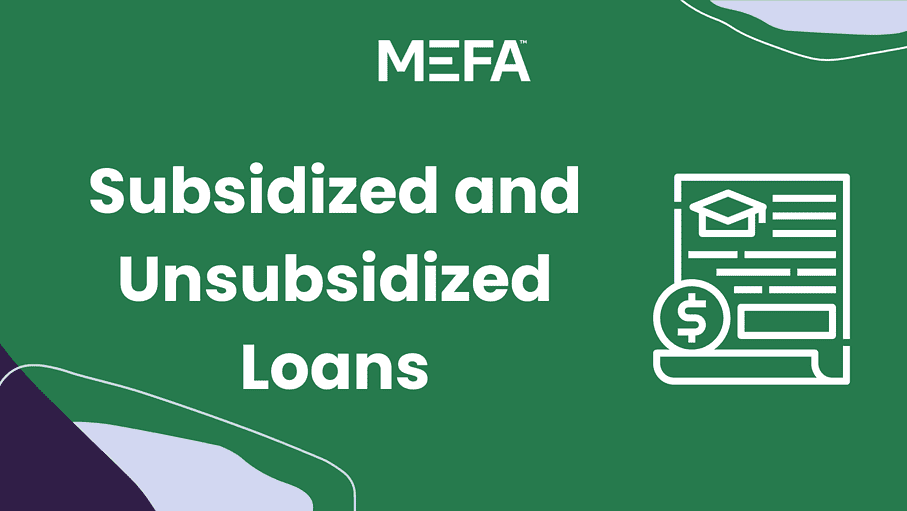If you’ve seen the terms subsidized and unsubsidized on your financial aid offers from colleges, you may be wondering what the difference is between these types of student loans. MEFA’s Associate Director of College Planning Jonathan Hughes explains what these loans have in common, as well as how they differ when it comes to accruing interest. For more information on federal student loans, read our article, Federal Direct Student Loans.
Please note that this transcript was auto-generated. We apologize for any minor errors in spelling or grammar.
[00:00:00] Jonathan here from MEFA, and I’ll be your translator in the language of financial aid. Today I am going to be defining two terms, subsidized and unsubsidized.
Now, if you have a financial aid offer from a college, you’ve probably already seen these words attached to these other words, federal, direct student loans, and you may have one loan amount that’s labeled, subsidized, and another loan amount that’s labeled unsubsidized. Let me explain. First one thing they have in common.
Students aren’t expected to make payments on any federal direct student loans while they’re enrolled in classes. This is called being in deferment. Now, if you have an unsubsidized loan in deferment, this means there’s interest being added to the loan amount every day. So when you start repayment, the amount you start to repay is the amount you borrowed, plus the interest that was added during your deferment.
If you have a subsidized loan, there is no interest being added while the loan [00:01:00] is in deferment, and when you start to repay, your balance will just be what you borrowed in the beginning of repayment. Interest will then start being added to the loan. Subsidized loans aren’t easy to come by, and that’s just one reason that if you qualify, you should start with subsidized federal direct student loans.
If you need to borrow it all, even if you only qualify for unsubsidized federal student loans, you’ll be eligible for several other benefits that aren’t available. With most private student loans. If you have any other questions about student loans or anything else, here’s how to reach us.











